Advancements in Auditory Nerve Repair Techniques
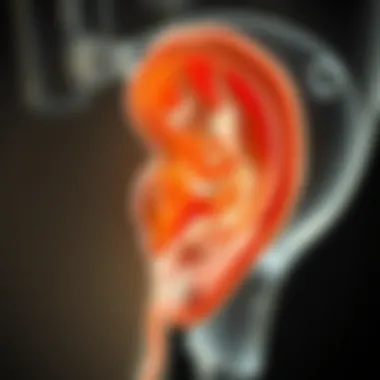
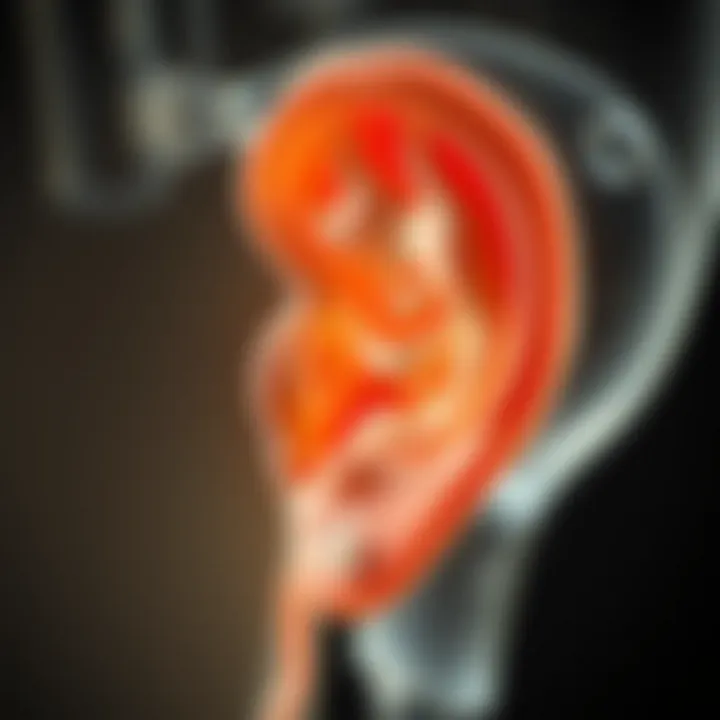
Intro
Understanding the auditory nerve repair landscape is akin to deciphering the delicate intricacies of a symphony. This field, full of complex interactions and subtle nuances, presents an essential area of focus for medical research. As hearing loss and auditory deficiencies become increasingly prevalent, the need for effective repair strategies becomes more urgent. The auditory nerve plays a key role in this challenge, serving as the essential conduit for sound signals from the inner ear to the brain.
Recent advances in regenerative medicine, gene therapy, and other innovative technologies are opening new avenues for restoring hearing and improving auditory health. This article presents an exploration into these methodologies alongside a detailed examination of their efficacy and applicability in clinical settings. By navigating through the current trends and future directions in auditory nerve repair, we seek to provide a roadmap for researchers, educators, and professionals striving to better the quality of life for those impacted by hearing impairments.
Foreword to Auditory Nerve Repair
The intricate field of auditory nerve repair bridges the gap between neuroscience and clinical practice. As we dive into this domain, we uncover not just a medical concern but an urgent quest to enhance the quality of life for individuals affected by auditory issues. Understanding auditory nerve repair involves recognizing the nuances of auditory function, the implications of injury, and the multifaceted approaches currently being explored.
Understanding the Auditory System
At its core, the auditory system is a marvel of biological engineering. It encompasses various structures, chief among them the inner ear, auditory nerve, and the brain’s auditory cortex. Each of these components plays an essential role in how we perceive sound. The process begins with sound waves entering the ear, where they are transformed into mechanical vibrations. The cochlea, a spiral-shaped organ in the inner ear, converts these vibrations into electrical signals that travel along the auditory nerve to the brain.
Understanding these processes is foundational for recognizing how damage to the auditory nerve can disrupt hearing. Auditory nerve damage might stem from various sources, including trauma or genetic disorders, leading to profound consequences. The complexity of the auditory system means that even minor disruptions can significantly alter auditory perception, often leaving patients with partial or complete hearing loss.
Importance of the Auditory Nerve
The auditory nerve stands as a vital conduit for sound information to be processed by the brain. Damage to this nerve can result in conditions ranging from tinnitus to total deafness. The implications of such injuries stretch beyond mere sound perception; they can affect social interactions, educational outcomes, and emotional well-being. For children, untreated auditory issues can hinder language development and educational achievement. Similarly, in adults, hearing loss can lead to isolation and decreased quality of life.
"The ability to hear is central to communication, making auditory nerve repair not merely a medical necessity but a societal imperative."
Recognizing the importance of the auditory nerve thus sets the stage for exploring repair strategies. Innovations in medical science are promising, yet they require a comprehensive understanding of both auditory physiology and pathology. Only then can we adapt current methodologies and research new ones to restore hearing effectively. As we move forward, the need for interdisciplinary approaches combining neurology, audiology, and bioengineering becomes increasingly evident. The stakes are high, and the future of auditory nerve repair is a domain ripe for exploration.
Anatomy of the Auditory Nerve
Understanding the anatomy of the auditory nerve is fundamental to comprehending the complexities of hearing restoration. The auditory nerve is a critical structure that facilitates sound signal transmission from the inner ear to the brain, acting as the main conduit for auditory information. This nerve’s intricate structure not only allows it to transmit sound but also serves as a point of interest when discussing auditory nerve repair methodologies. By exploring its anatomy, we can grasp the unique challenges involved in repairing or restoring its function, which can lead to a deeper insight into therapeutic strategies and future research endeavors.
Structure and Function
The auditory nerve, also known as the cochlear nerve, is comprised of approximately 30,000 nerve fibers, connecting the cochlea to the brainstem. This bundle of fibers can be categorized into two main groups: Type I and Type II afferent fibers. Type I fibers, which account for about 90% of the total fibers, connect to large inner hair cells in the cochlea, translating sound vibrations into electrical impulses. These impulses ascend through the auditory pathway, ultimately reaching the auditory cortex where sound perception occurs. Type II fibers, on the other hand, connect with the outer hair cells and play a role in the modulation of sound sensitivity and frequency discrimination.
The operation of the auditory nerve hinges on its structure. The nerve fibers are ensheathed in myelin, an insulating layer that speeds up electrical conduction, which is vital for quick reflexive responses to sounds. Importantly, disturbances or damage along this pathway can severely hinder auditory processing. This could be caused by various factors such as noise trauma, aging, or certain diseases, leading to conditions like sensorineural hearing loss. Understanding these functional elements is crucial for those engaging with repair strategies.
"Repairing the auditory nerve is not just about reconnecting; it’s about restoring the delicate synergy of its structure and function to regain hearing ability."
Nerve Pathway and Connections
The pathway of the auditory nerve is shaped by a series of connections and synapses that facilitate sound transmission. Once the auditory nerve fibers exit the cochlea, they enter the brainstem at the level of the medulla oblongata, where they synapse with neurons in the cochlear nuclei. From here, the auditory information travels through several relay stations, including the superior olivary complex and the inferior colliculus, before reaching the thalamus and subsequently the auditory cortex in the temporal lobe.
Each of these connections plays a pivotal role in enhancing auditory processing. The superior olivary complex, for instance, is crucial for sound localization, allowing for spatial awareness of sound sources — a function critical for everyday communication. Disruptions in any of these synapses can lead to heightened auditory sensitivity or complete loss of hearing, thus drawing significant attention to the importance of maintaining these connections in any repair strategy. Furthermore, advancements in imaging technologies now enable researchers to visualize these pathways in unprecedented detail, offering insights into how these connections can be restored.
As we delve deeper into the various methodologies for repairing the auditory nerve, it becomes increasingly clear that a comprehensive understanding of its anatomy—structures and pathways—is indispensable. Armed with knowledge about the anatomy and functions of the auditory nerve, researchers and clinicians are better equipped to design effective interventions aimed at restoring hearing and improving the quality of life for those with auditory impairments.
Types of Auditory Nerve Damage
The auditory nerve, an essential conduit for sound communication from the ear to the brain, can suffer from various forms of damage. Understanding these types is crucial in the context of repair strategies, influencing everything from diagnosis to treatment. Each category of damage brings its own complexities, requiring specialized approaches for effective intervention.
Traumatic Injury
Traumatic injury to the auditory nerve often arises from blunt force or penetrating trauma, disrupting the nerve's integrity. Common scenarios include accidents, blasts from explosions, or even surgical complications. The consequences can be severe, ranging from complete hearing loss to distorted auditory perception, affecting the quality of life significantly.
In many cases, the extent of damage is not immediately apparent, presenting a challenge for clinicians. A thorough assessment, using advanced imaging techniques like MRI, is fundamental to identify the type and severity of injury.
Possible treatments for traumatic injuries can vary, but they often include:
- Surgical repair to reconnect or graft the nerve
- Rehabilitation programs to retrain the auditory pathways
- Use of hearing aids or cochlear implants where appropriate
These strategies underline the importance of a personalized treatment plan, tailored to the individual's specific circumstances. Without prompt and effective intervention, patients may experience further deterioration of hearing function, leading to a more complex recovery process.
Degenerative Conditions
Degenerative conditions encompass a range of progressive diseases that can damage the auditory nerve over time, often insidiously. Conditions such as auditory neuropathy or age-related hearing loss typically fall into this category. Unlike traumatic injuries, where the onset of symptoms can be abrupt, degenerative conditions often creep up unnoticed until substantial damage has occurred.
One significant aspect to consider is the multifactorial nature of these conditions. Factors can include:
- Genetic predispositions
- Environmental influences, like exposure to loud noises
- Overall health conditions, such as diabetes and cardiovascular disease
Management strategies for degenerative conditions necessitate a more holistic approach. Early detection becomes paramount, as intervention in initial stages often yields better outcomes. Therapeutic options may involve:
- Auditory training exercises to enhance remaining hearing capabilities
- Medications to potentially slow the progress of degeneration
- Surgical interventions in cases where nerve pathways can be preserved
Each intervention strategy must be critically tailored to the type of degeneration and individual patient needs, with ongoing assessment to adapt to any changes in the patient's condition. As research in this field expands, the potential for novel pharmacological therapies and genetic interventions offers hope for solutions that currently remain elusive.
In summary, comprehending the nuances of auditory nerve damage extends beyond mere categorization—it's a vital foundation for advancing treatment protocols and enhancing patient outcomes. By focusing on both traumatic injuries and degenerative conditions, we can navigate the complex landscape of auditory health towards more effective solutions.
Understanding the type of damage is crucial for determining the most effective repair strategy.
Current Repair Strategies
In the realm of auditory nerve repair, current strategies play an essential role in bridging the gap between loss of hearing and the restoration of auditory function. These strategies not only focus on immediate recovery methods but also advocate for a comprehensive understanding of how to mitigate future damage and enhance the body’s natural healing capabilities. Highlighting both surgical interventions and pharmacological therapies, this section will delve deeply into how these contemporary approaches hold potential for significant advancements in auditory health.
Surgical Interventions
Surgical interventions stand at the forefront of auditory nerve repair. They offer a direct approach to addressing physical damage to the auditory structures. Procedures like cochlear implants have revolutionized how medical professionals approach hearing loss, enabling the delivery of electrical signals directly to the auditory nerve.
A significant aspect of this method is the surgical skill required to navigate the complex anatomy of the ear while minimizing further damage. The effectiveness of such surgeries often hinges on preoperative assessments that evaluate the specific type and extent of nerve injury.
- Substantive Benefits:
- Considerations:
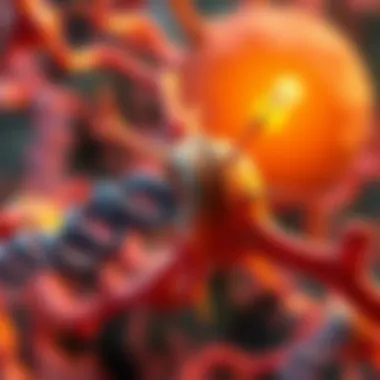
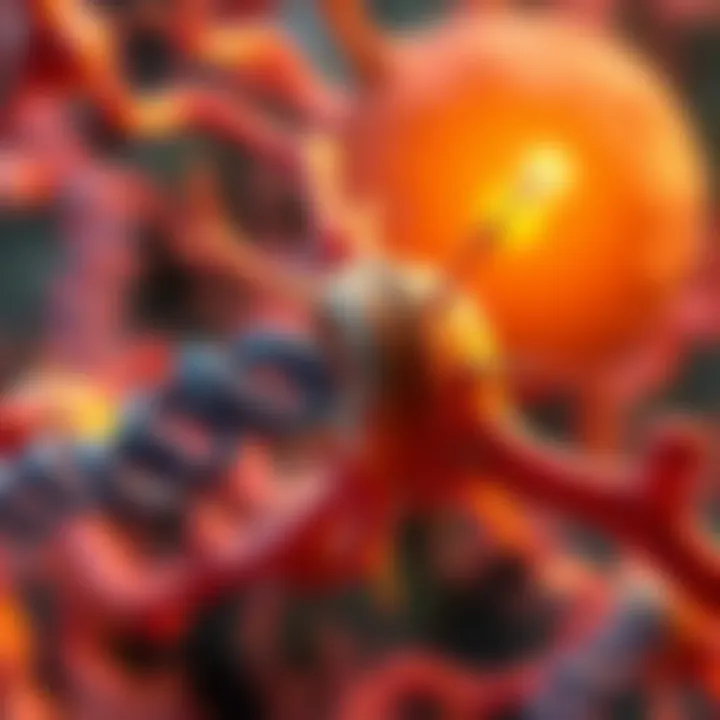
- Patients can experience significant improvements in speech perception.
- These interventions can restore functionality even in individuals with profound hearing loss.
- Risks associated with surgery, including infection or device malfunction.
- Fitting and follow-up with audiological support following the initial intervention is crucial for long-term success.
Diseases such as acoustic neuroma, or tumors on the auditory nerve, can also necessitate surgical removal, paving the way for new methods of auditory nerve repair. This type of intervention raises the stakes significantly, as it involves careful considerations of preserving surrounding structures and hearing capabilities, which could impact subsequent rehabilitative strategies.
Neuroprotective Agents
Neuroprotective agents are gaining traction as a complementary approach in auditory nerve repair, particularly regarding the preservation of remaining auditory function. These pharmacological compounds are designed to safeguard nerve cells from damage due to various factors, including ototoxic drugs, noise exposure, or age-related degeneration.
Recent studies show promise in using agents like Riluzole and Minocycline, which aim to bolster neuronal survival by blocking excessive excitotoxicity – a harmful process where nerve cells are damaged and killed by elevated levels of neurotransmitters. The focus here is twofold: to prevent further degeneration and support the regenerative abilities of existing nerve pathways.
- Advantages of Neuroprotective Strategies:
- Challenges Involved:
- They provide an avenue for treatment that can be initiated before substantial damage occurs, essentially acting as a safeguard.
- These agents can be integrated alongside surgical options, allowing for a multifaceted approach to hearing restoration.
- Finding the appropriate timing for the administration of these agents is critical; too late, and their benefits might be negligible.
- Potential side effects or interactions with other medications must be closely monitored.
The integration of surgical techniques with neuroprotective strategies marks a promising pathway in auditory nerve repair, representing a multifaceted approach to restoring hearing.
Innovative Techniques in Auditory Nerve Repair
Innovative techniques are reshaping the landscape of auditory nerve repair. As our understanding of the auditory system evolves, so do the methods we employ to address nerve damage. These modern strategies not only enhance the potential for recovery but also pave the way for transformations in therapeutic approaches.
The urgency of addressing auditory nerve injuries cannot be overstated. They affect a significant portion of the population, leading to hearing loss that impacts day-to-day life, communication, and overall quality of life. By delving into cutting-edge advancements, we can explore the mechanisms through which new therapies might provide solutions.
1. Importance of Innovative Techniques:
- Potential for Restoration: Innovative methods, such as stem cell and gene therapies, stand at the forefront of regenerative medicine, promising to restore function in previously irreversible cases.
- Customization of Treatment: New technologies allow for more personalized treatment plans, taking into account individual variations in nerve damage.
- Combination Therapies: Utilizing multiple innovative therapies concurrently may enhance the efficacy of treatment, showing that collaboration between different approaches can yield better outcomes.
This section will focus on two groundbreaking techniques gaining traction in auditory nerve repair:
Stem Cell Therapy
Stem cell therapy is rooted in the concept of regeneration, drawing on the potential of stem cells to develop into various types of cells necessary for nerve repair. The significance of stem cells lies in their capability to differentiate into specialized cells, effectively aiding in the restoration of damaged auditory pathways.
- Mechanisms of Action: Stem cells can secrete neurotrophic factors, promoting healing and growth. This restorative property is crucial for alleviating the detrimental effects of nerve damage.
- Research Findings: Recent studies indicate that introducing stem cells directly into damaged regions shows promise in ameliorating hearing loss, with observed increases in neuronal survival rates.
- Challenges Ahead: Ethical concerns surrounding stem cell use, along with variability in patient response, present hurdles that warrant continuous examination.
Gene Therapy Approaches
Gene therapy represents another frontier that has the potential to revolutionize auditory nerve repair. By directly altering the genetic makeup of cells, this approach aims to correct deficiencies that lead to hearing loss. The implications are profound, as such strategies target the root cause of auditory dysfunction.
- Targeted Delivery: Gene therapy often employs vectors, like viruses, to deliver genetics material precisely where it is needed. This precision reduces unwanted effects on non-target tissues.
- Long-Term Solutions: Unlike traditional therapies that may require frequently repeated applications, gene therapy may offer longer-lasting results by addressing underlying genetic factors.
- Regulatory and Safety Concerns: As with any novel treatment, cautious evaluation of safety and effectiveness through rigorous clinical trials is crucial. The path from the laboratory to clinical application must adhere to stringent ethical standards and oversight.
"Innovative approaches in auditory nerve repair highlight the shift towards solutions that not only treat symptoms but also target underlying conditions."
Integrating both stem cell therapy and gene therapy into clinical practice hinges upon advancements in research, technology, and a clear understanding of the auditory nerve’s complex biology. As we explore these innovative avenues, it becomes crucial to maintain a focus on the practical implications they hold for patients.
For further reading on the impact of stem cell and gene therapy in medical research, consult resources at NIH.gov and PubMed.edu.
Regenerative Medicine in Auditory Nerve Repair
Regenerative medicine plays a pivotal role in auditory nerve repair by offering potential pathways to restore function in damaged auditory systems. This field not only focuses on repairing the physical structure of tissues but also emphasizes restoring the functionality that may have been lost due to injury or disease. With considerable advancements in research and technology, regenerative strategies are becoming more viable, providing hope for patients facing hearing loss.
One of the primary advantages of regenerative medicine is its ability to harness the body's natural healing mechanisms. Understanding the underlying principles of how cells and tissues regenerate can inform targeted therapies that optimize recovery processes. For example, using stem cells to promote regeneration has gained traction in recent years. By potentially differentiating into neural cells, stem cells could re-establish connections within the auditory pathway, thereby improving hearing outcomes.
While the benefits of regenerative medicine in this area are significant, there are critical considerations that researchers must navigate. Issues such as cellular rejection, long-term stability, and ethical implications need thorough examination. Moreover, the integration of regenerative therapies with mechanical devices, such as cochlear implants, offers exciting possibilities for improved patient outcomes.
Tissue Engineering Principles
Tissue engineering is crucial in the journey toward effective auditory nerve repair, as it combines principles from biology, materials science, and engineering to create biological substitutes that restore, maintain, or improve tissue function. The concept revolves around designing frameworks that allow cells to grow, thrive, and ultimately regenerate damaged neural tissue. Success in tissue engineering for the auditory nerve hinges on creating a conducive environment that mimics natural tissue architecture and biochemical signaling.
Critical components of tissue engineering include:
- Scaffold Design: The physical support for cells that promotes their attachment, proliferation, and differentiation. A well-designed scaffold mimics the extracellular matrix, facilitating the growth of auditory neurons.
- Cell Sources: Utilizing stem cells, including induced pluripotent stem cells (iPSCs) and mesenchymal stem cells, enhances the regenerative potential. Tailoring the source of cells to patient-specific conditions can further improve outcomes.
- Biological Factors: Incorporating growth factors and neurotrophic signals into the engineered tissues can enhance the survival and integration of the new cells within the existing auditory framework.
This integration of scaffold technology with dynamic cellular environments represents a significant leap forward in auditory nerve repair.
Application of Biomaterials
Biomaterials are at the heart of many regenerative strategies aimed at repairing auditory nerves. These materials are engineered to be compatible with biological systems to promote healing without causing adverse reactions. They function as scaffolds to support tissue regeneration while also releasing essential growth factors, thus encouraging neural repair.
Different types of biomaterials include:
- Natural Biomaterials: Derived from biological sources, such as collagen or hyaluronic acid, these materials promote biocompatibility and support cell functions.
- Synthetic Biomaterials: Engineered to have specific properties, allowing for customization based on the intended application. Polymers like PLGA (poly(lactic-co-glycolic acid)) have seen use for their favorable mechanical properties and bioresorbability.
- Conductive Biomaterials: These materials enhance electrical signaling, crucial for auditory nerve function, and can potentially improve neural communication and overall effectiveness of auditory prostheses.
In summary, the application of biomaterials serves multiple roles in auditory nerve repair, from providing structural support to actively encouraging cellular responses that promote healing. The combination of tissue engineering and biomaterials stands to revolutionize treatment approaches and improve quality of life for individuals suffering from auditory nerve damage.
Neurotrophic Factors in Repair Processes
In the realm of auditory nerve repair, neurotrophic factors represent a formidable component. Their importance cannot be overstated, as these proteins fundamentally influence neuronal health and regeneration. By facilitating the survival, development, and differentiation of neurons, neurotrophic factors could potentially transform approaches to treating auditory nerve damage. Understanding the specific roles these molecules play can shed light on more effective therapeutic options, contributing not just to the repair processes but also to the overall enhancement of auditory health.
Types of Neurotrophic Factors
Neurotrophic factors can be categorized into various families, each with distinct properties and functions. Some of the key types include:
- Nerve Growth Factor (NGF)
NGF plays an essential role in stimulating the growth and maintenance of sensory neurons. It has been shown to influence auditory neuron survival, making it a prime candidate for research in auditory nerve repair. - Brain-Derived Neurotrophic Factor (BDNF)
BDNF is involved in the survival of existing neurons and the growth of new neurons and synapses. Its neuroprotective effects are crucial in conditions where nerve injury is present, offering hope for hearing restoration strategies. - Neurotrophin-3 (NT-3)
This factor encourages the survival and function of various neuronal populations, including those in the auditory system. NT-3 has potential therapeutic implications in enhancing auditory nerve resilience. - Ciliary Neurotrophic Factor (CNTF)
CNTF is known for its ability to promote neuronal survival. It may be applicable in situations involving nerve degeneration, assisting in the recovery of auditory function.
Effects on Nerve Regeneration

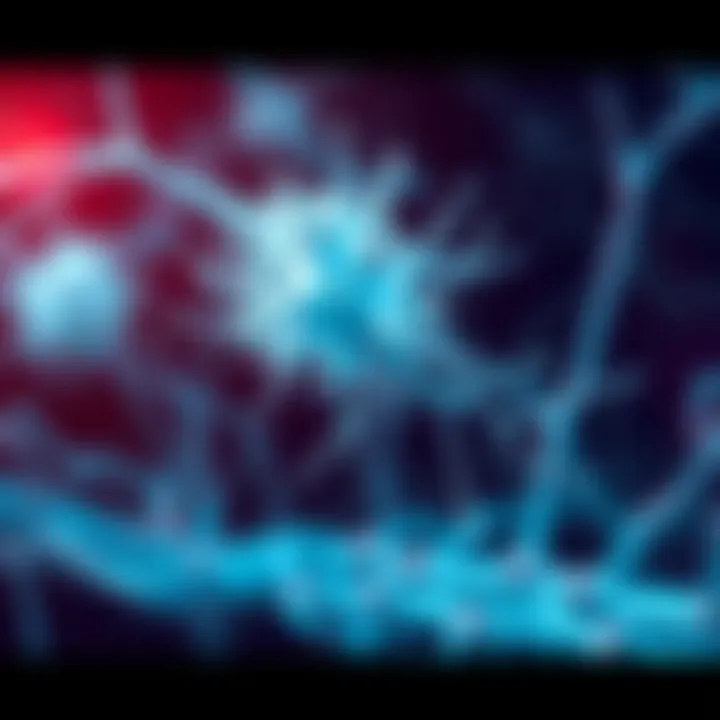
The effects of neurotrophic factors on nerve regeneration are wide-ranging and impactful. When applied to auditory nerve repair, these factors can:
- Promote Cell Survival: A critical aspect of recovery from nerve injuries is that survival of the affected neurons can often be ensured through neurotrophic signaling. Sustaining these cells enhances the potential for recovery.
- Enhance Axonal Growth: Neurotrophic factors can stimulate and guide the growth of axons, the projection of neurons that transmit signals. This process is essential for re-establishing connections that may have been severed during injury.
- Facilitate Synaptic Plasticity: These factors are integral in supporting modifications in synapses, which underlie learning and memory processes. In relation to auditory function, this aspect of neurotrophic impact could aid in rebuilding auditory pathways, thereby improving hearing.
- Mitigate Inflammation: By balancing inflammatory responses in the injured area, neurotrophic factors can help create a conducive environment for nerve repair. Inflammation can impede healing, so modulating it benefits regeneration.
Understanding and manipulating neurotrophic factors in auditory nerve repair opens new vistas in therapeutic approaches, potentially leading to innovative solutions and enhanced auditory outcomes.
Further exploration of how these factors can be effectively utilized—whether in isolation, combination therapies, or alongside surgical interventions—demonstrates the potential they hold for advancing auditory medicine. Their role ultimately emphasizes the intricate interplay of molecular mechanisms necessary for successful nerve repair and regeneration.
Challenges in Auditory Nerve Repair
Auditory nerve repair is fraught with a myriad of challenges, making it a complex yet fascinating area of medical research. Understanding these hurdles is crucial, especially for researchers and medical professionals dedicated to improving auditory health. The process of restoring hearing involves not only addressing the damage to the nerve itself but also grappling with biological, technical, and ethical considerations that can affect patient outcomes.
One pressing issue is the biological response to injury. Nerve damage often triggers scar tissue formation, which blocks the repair process and may lead to permanent hearing loss. The intricate balance between promoting nerve regeneration while minimizing scar formation is a delicate dance that researchers and clinicians must master. This dilemma complicates surgical efforts and makes non-invasive therapies less effective.
Why this Matters: Understanding these challenges is fundamental, as it informs future research efforts and therapeutic strategies. If we can elucidate the underpinnings of these obstacles, it becomes easier to devise novel strategies to circumvent them.
"The most beautiful thing we can experience is the mysterious. It is the source of all true art and science." – Albert Einstein
Scar Formation and Its Impact
Scar formation, particularly in the central nervous system, presents significant roadblocks to effective auditory nerve repair. When the nerve is injured, the body’s natural healing response can lead to the proliferation of glial cells, which form scar tissue. This tissue fills the gap where the nerve was damaged, but it doesn’t provide the necessary support for nerve regrowth. Instead, it can inhibit the process, creating a barrier to successful reconnection.
The implications of scar formation extend beyond mere biological repair. Patients may experience altered auditory perceptions or inconsistent hearing abilities due to inadequate nerve regrowth. Scar tissue often results in a misfiring of signals, leading to distortion in sound and loss of clarity. For individuals who depend on hearing for communication and social interaction, this can dramatically diminish quality of life.
Key Takeaways about Scar Formation:
- It inhibits natural nerve regeneration.
- It can lead to distorted sound perception post-repair.
- Addressing this issue is critical for improving patient outcomes.
Limitations of Existing Therapies
Despite advancements in medical technology and techniques, many existing therapies designed for auditory nerve repair have significant limitations. Surgical interventions, while promising, are not universally effective. The variability in individual patient responses to surgical techniques can often lead to inconsistent results. Some patients might experience improved hearing, while others see little to no change.
Pharmaceuticals designed to enhance nerve growth or minimize scar tissue formation are still in their infancy. Many neuroprotective agents have shown promise in animal models but fail to translate successfully into human applications. The molecular complexity of human biology often leads to unforeseen challenges that limit effectiveness in real-world scenarios.
Investment and Research Gaps:
- There’s an ongoing need for funding in this domain to drive research.
- Interdisciplinary collaboration can lead to breakthroughs in therapy effectiveness.
- Future research should focus on personalized treatment options that take individual biological responses into account.
The pressing need to tackle these challenges in auditory nerve repair continues to drive researchers to explore uncharted territories in medicine, technology, and patient care.
The Role of Computational Models
The utilization of computational models has become vital in the field of auditory nerve repair. These models offer a simulated environment where the complex processes of nerve repair can be analyzed and understood without the ethical concerns and limitations of human trials. Understanding how auditory nerves function and how they can regenerate after injuries is fundamental, and computational models provide a means to dissect these intricate biological mechanisms.
Modeling Nerve Repair Processes
Modeling nerve repair processes not only enhances our insights but also facilitates predictions about outcomes based on various interventions. Computational models can simulate different variables such as the application of neurotrophic factors, the integration of stem cell therapies, and the dynamics involved in surgical repair strategies. They can provide data on the best approaches for optimizing nerve regeneration and recovery of hearing functions.
Benefits of computational models in this context include:
- Risk Reduction: They allow for hypothesis testing and experimentation in a risk-free setting, minimizing harm to actual subjects.
- Enhanced Understanding: By building models that mimic biological systems, researchers can investigate how various factors impact nerve repair at different stages.
- Personalization: These models can be tailored to account for individual differences, allowing for personalized medical approaches to auditory nerve repair.
- Cost Effectiveness: Simulating experiments dramatically reduces the costs associated with research, as resources are used more efficiently.
However, while computational models have significant advantages, they are not without challenges. Accurate modeling requires precise biological data and an understanding of complex interactions. Models need continual validation and refinement against real-world outcomes to remain relevant. Over-reliance on modeling without confirming findings through practical experimentation can lead to erroneous conclusions. Therefore, a balanced approach combining both computational methods and empirical studies is essential.
"The integration of computational models in auditory nerve repair opens a new dimension in research, enabling scientists to visualize and experiment with biological processes in ways once thought impossible."
In summary, computational models are a cornerstone in advancing the understanding of auditory nerve repair. They serve as a bridge connecting theoretical knowledge with practical application, guiding future research directions that could one day restore hearing in those who have lost it.
Ethical Considerations in Research
The realm of auditory nerve repair encapsulates numerous breakthroughs that question not only our scientific understanding but also our ethical frameworks. As researchers push boundaries, ethical considerations become pivotal to ensure that advancements do not come at the expense of patients' rights or wellbeing. Ignoring these elements can lead to a distrustful environment between researchers, participating individuals, and the society at large.
Informed Consent and Research Ethics
Informed consent is a cornerstone of ethical research practices, especially in medical fields such as auditory nerve repair. It's crucial that participants fully understand the nature of the study, including the purpose, potential risks, and benefits. This involvement empowers individuals, allowing them to make educated decisions about their participation.
Additionally, researchers must ensure that this consent is both freely given and informed. Rushed or unclear explanations can lead to misunderstandings that compromise the sanctity of consent. An individual might think they are signing up for a simple study, only to find that the procedure could be significantly more invasive. In auditory nerve studies, where procedures may include delicate tissue manipulation or experimental therapies, this becomes even more pressing.
Ethical research also necessitates the continuous monitoring of participants’ health throughout the study. There must be protocols in place to safeguard their wellbeing, ensuring that no unanticipated harm occurs. Transparency in all stages of research establishes trust and respect between the medical community and study volunteers, fostering a collaborative environment for discoveries.
Implications for Future Studies
The ethical guidelines established in current research will shape the trajectory for future investigations in auditory nerve repair. When ethical considerations are prioritized, they foster an atmosphere conducive to innovation. There are several implications worth noting:
- Increased Participation: If potential participants are confident their rights are upheld and that their safety is prioritized, they might be more inclined to join future studies. This is particularly true in sensitive areas like auditory health, where many individuals are affected by hearing loss.
- Collaboration Across Disciplines: Ethical research encourages collaboration among professionals from diverse fields, from audiology to bioethics. A variety of perspectives can enhance the quality of research and address all ethical quandaries more comprehensively.
- Long-term Impact on Policy: As ethical practices are noted, there is potential for influencing policy changes within medical research. Implementing robust ethical standards can lead to more regulated environments that protect not just individuals, but also the integrity of the research conducted.
- Public Trust: Overall, when ethics take center stage, public trust in medical research can grow, which is essential for future funding and support. People are more apt to back studies that are transparent and respectful of participant rights.
In essence, weaving ethical considerations into the fabric of auditory nerve repair research not only safeguards individuals but also lays down a robust foundation for future advancements and collaborative efforts. This conscientious approach becomes a bulwark against potential pitfalls, reinforcing the notion that, in the pursuit of innovation, we must never lose sight of our moral responsibilities.
Future Directions in Auditory Nerve Repair Research
As we peer into the promising landscape of auditory nerve repair, it's vital to assess where research is headed and how future advancements can reshape the field. The focus on future directions isn't just about the hunt for novel treatments; it’s about understanding the intricate interplay of technology, biology, and patient care. Emphasizing innovative approaches, integrating various therapeutic modalities, and considering ethical implications will underpin effective strategies moving forward.
A significant element of this exploration is recognizing the potential benefits for those with auditory nerve damage. Developing effective therapies could restore hearing and contribute to improved quality of life for patients grappling with hearing loss. These future steps promise not only to enhance our scientific understanding but also deliver tangible benefits to individuals and communities.
Convergence of Technologies
The convergence of technologies is an exciting prospect in auditory nerve repair. By merging disciplines such as biotechnology, nanotechnology, and neurology, researchers can forge new pathways in treatment. For instance, the application of nanotechnology for targeted drug delivery can improve the effectiveness of neuroprotective agents in repairing damaged nerves. Furthermore, advancements in imaging technologies can enable real-time monitoring of nerve regeneration, allowing clinicians to tailor treatments based on specific patient responses.
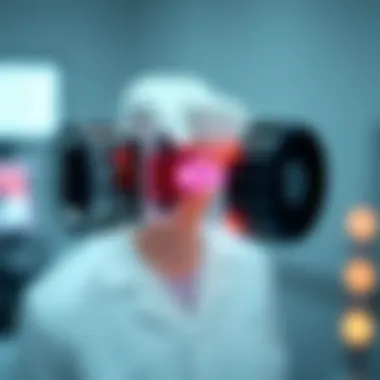
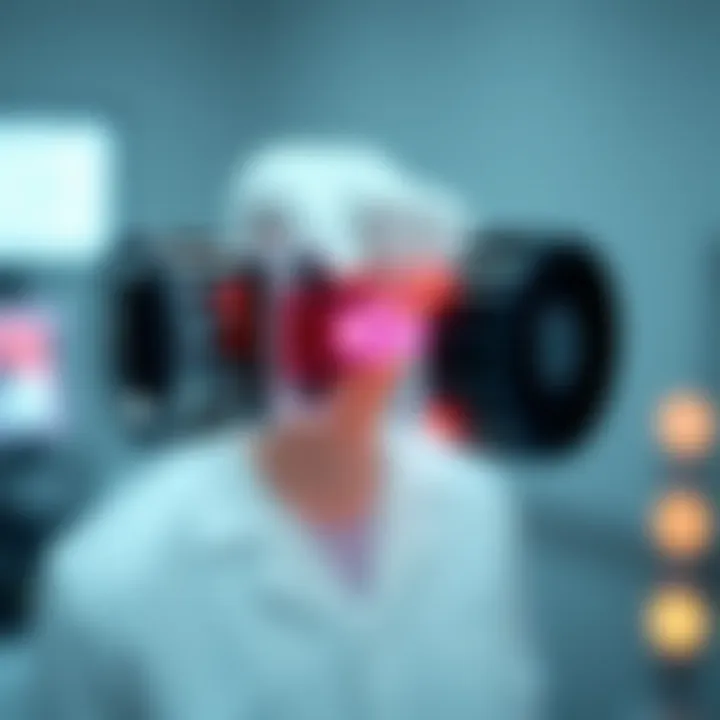
Some specific areas worth noting include:
- Wearable devices: Innovations in wearables could facilitate early detection of auditory complications, leading to prompt interventions.
- Artificial Intelligence (AI): The use of AI systems in analyzing large datasets can help identify patterns in nerve repair outcomes, improving research efficiency and clinical practices.
- Telemedicine: The increase in telehealth can give specialists access to patients in remote areas, broadening the reach of auditory medical care.
The integration of these technologies encourages a multidisciplinary approach, paving the way for more comprehensive treatments that target the root causes of auditory nerve damage while considering patient-centered care.
Emerging Paradigms in Treatment
New paradigms in treatment are crucial as researchers seek innovative ways to enhance recovery. Approaches such as personalized medicine are gaining traction, tailoring therapies to individuals based on genetic makeup and specific pathology. For example, understanding variations in the neurotrophic factor response among patients can lead to customized therapies that are more effective than traditional, one-size-fits-all treatments.
Moreover, interdisciplinary collaborations between neuroscientists, clinicians, and engineers spark creative solutions to complex problems. Emerging methodologies might include:
- Gene editing techniques: Utilizing CRISPR technology to potentially correct genetic defects responsible for auditory nerve deterioration.
- Biological scaffolds: Using engineered materials that mimic the natural extracellular matrix to guide nerve regrowth and improve connectivity.
- Regenerative cellular therapies: Harnessing the body’s own repair mechanisms, like using endogenous stem cells more effectively to promote healing.
The shift towards these treatment paradigms promises a more integrative approach to auditory nerve repair, one that takes into account the multifaceted nature of nerve damage and leverages advancements across various scientific domains.
In the realm of auditory nerve repair, the path forward is marked by innovation, collaboration, and a focus on personalized patient experiences. By staying attuned to the latest trends and technologies, we can not only improve outcomes but fundamentally transform how auditory conditions are treated.
As we venture into this exciting phase, the interplay of science and compassion will guide our efforts, ensuring that advancements benefit those impacted by hearing loss while also enriching the broader field of auditory health.
Clinical Implications of Research Advances
Research in the realm of auditory nerve repair has far-reaching clinical implications that shape the way we approach auditory health. As breakthroughs surface in areas like gene therapy and neurogenesis, there is a pressing need to evaluate how these advancements can be effectively translated into real-world practices that improve patient care. Understanding these implications not only informs medical professionals but also equips patients with knowledge about the potential for restoring their hearing capabilities.
One crucial element of this translation is the integration of novel therapies into existing frameworks of audiological care. As new methods are developed, audiologists will have to grasp the nuances of these techniques to offer informed recommendations to their patients. The conversations around treatment options could evolve tremendously, fostering an environment where patients are more empowered to participate in their treatment decisions.
Another important consideration is the cost-effectiveness of these new strategies. Typically, cutting-edge treatments come with high price tags, and health systems will need to assess if the benefits, including potential improvements in quality of life, justify the expenditures. This financial aspect must not be overlooked as it can dictate accessibility for patients, ultimately influencing the overall success of any new treatments.
Much of the current research also highlights the necessity for collaboration across various medical disciplines. This interdisciplinary approach could lead to comprehensive treatment protocols that consider both the physiological and psychological needs of patients. Each advance will have varied implications for different stakeholders, including healthcare providers, researchers, and patients, emphasizing the need for collective effort.
In summary, the implications of innovative research for clinical practice are profound and complex. The key focus is ensuring that as we discover more, we also establish frameworks to incorporate these findings effectively into patient care regimes, assuring that advancements translate into real-world benefits.
"The true measure of medical research is not merely in what we discover, but how effectively we can apply our knowledge to improve lives."
Impact on Patient Care
The advancements in auditory nerve repair research are prompting a significant transformation in patient care. Improved understanding of auditory nerve damage, alongside the development of new therapeutic strategies, stands to not only restore hearing but also enhance the overall healthcare experience for patients.
Patients dealing with hearing loss often face a slew of emotional and social challenges. Integrating research breakthroughs into clinical settings means potentially alleviating some of these burdens. For instance, a successful application of neuroprotective agents could lead to a reduction in further nerve damage, thus preserving hearing capabilities. Treatments that show promise in clinical trials could soon meaningfully impact patients’ everyday lives, allowing them to engage more fully with the world around them.
Consider these potential effects:
- Quality of Life: Improved hearing can lead to greater social interaction, reducing feelings of isolation.
- Early Diagnosis and Intervention: With emerging therapies, a faster turnaround for diagnosis could be established, enabling early treatments before damage is severely compounded.
- Patient Empowerment: As patients become informed about their options, they can take a more active role in their treatment plans, enhancing their autonomy and satisfaction.
Clinically, addressing auditory nerve repair research requires not just the implementation of new techniques, but also a shift in the mindset of healthcare providers. There needs to be acknowledgment that each patient’s situation is unique, and treatments should be tailored accordingly to maximize benefits.
Integration with Audiology Practice
The evolution of auditory nerve repair research necessitates a re-evaluation of established audiology practices. As new treatments emerge, audiologists must be well-equipped to integrate these innovations into their daily practice. This will not only enhance their professional capabilities but ultimately lead to better outcomes for patients.
Audiologists play a vital role in interpreting research and applying them to patient care. Here are a few considerations for effective integration of research advances into audiology practice:
- Continuous Education: Audiologists will need ongoing training to stay current with the latest techniques and findings in auditory research.
- Evidence-Based Practice: The integration of new research findings must be grounded in evidence-based principles to ensure that approaches are both safe and effective.
- Collaborative Protocols: Working closely with researchers can foster an environment where clinical insights can inform research priorities, creating a symbiotic relationship that enhances both practice and study.
Further, as the understanding of auditory nerve repair deepens, there may be a potential shift towards a more multidisciplinary approach, incorporating insights from neurology, genetics, and rehabilitation sciences. This diversification can only strengthen the field as knowledge allows for a fuller comprehension of the auditory system and its complications.
Collaborative Research Efforts
The realm of auditory nerve repair demands a collective approach. This section shines a light on collaborative research efforts that are pivotal to innovation and progress in this field. When experts from various disciplines unite, the potential for breakthroughs multiplies. The complexities of auditory nerve injuries necessitate a multi-faceted approach that combines knowledge of biology, engineering, and clinical practices. Here, we explore how collaboration enhances research outcomes, drives innovation, and overcomes existing challenges.
Interdisciplinary Approaches
Interdisciplinary collaboration is like a beautiful symphony, where each instrument plays a vital role in producing something greater than the sum of its parts. In the context of auditory nerve repair, professionals from fields such as audiology, neurology, biomedical engineering, and materials science contribute their expertise to drive research forward.
- Expertise Integration: By integrating various fields, researchers are able to tackle the biological, mechanical, and technological aspects of auditory nerve repair comprehensively. Each discipline adds a layer of insight. For instance, biomedical engineers can develop novel scaffolding for tissue regeneration, while neurologists can provide insights into nerve signaling pathways.
- Shared Resources: Collaborative efforts often lead to shared resources, minimizing costs and maximizing efficiency. Laboratories engaged in such partnerships might share advanced technologies or data sets, allowing for quicker progress as compared to isolated research.
- Innovative Solutions: Diverse perspectives bring about innovative solutions. For example, a joint project involving electronic engineering and audiology might yield new auditory devices that not only improve sound transmission but can actively stimulate nerve fibers, enhancing auditory processing.
The importance of fostering interdisciplinary collaboration can’t be overstated. It opens avenues for integrating innovative ideas into clinical practices, making treatments more effective.
Public-Private Partnerships in Research
Public-private partnerships (PPPs) present another critical facet of collaborative research efforts, bridging the gap between academic research and industrial applications. These alliances can significantly amplify the impact on auditory nerve repair.
Public-private partnerships can spur innovation, ensuring that scientific discoveries transition smoothly from the bench to bedside.
- Funding Opportunities: Collaborations between universities and private firms often attract larger pools of funding. This financial support is crucial for extensive research projects that would otherwise be too costly for individual parties to undertake alone.
- Real-World Applications: When private industry partners with academic institutions, the focus often shifts towards practical application. This means that research can directly address current clinical needs, leading to medical devices or therapies that have a tangible impact on patient care.
- Speeding Up Translation: PPPs facilitate faster translation of research findings into clinical applications. For instance, when a medical device developed in an academic setting gets support from a private company, the pathway to clinical trials becomes much clearer and shorter, thereby improving patient outcomes more rapidly.
Epilogue
The landscape of auditory nerve repair is both complex and rapidly evolving, holding significant promise for patients facing hearing loss due to nerve damage. In this article, we have explored the intricacies of the auditory system, examined various types of nerve damage, and discussed current strategies and innovative techniques employed in the field of auditory nerve repair. By dissecting the challenges and ethical considerations, we have painted a thorough picture of the state of research and clinical practice.
Summarizing Key Points
Some key points discussed include:
- Understanding the Auditory System: A solid grasp of the auditory anatomy is crucial for researchers and clinicians in effectively addressing nerve damage and developing targeted therapies.
- Current Repair Strategies: Traditional surgical interventions and the role of neuroprotective agents have been crucial in providing immediate solutions, although they often come with limitations.
- Innovative Techniques: The advent of stem cell therapy and gene therapy represents a leap in potential treatment methodologies, paving the way for more regenerative approaches.
- Regenerative Medicine: The applications of tissue engineering and various biomaterials highlight a trend toward creating environments conducive to nerve growth and repair.
- Future Directions: Emerging technologies and interdisciplinary collaborations hold promise for breakthroughs in auditory nerve repair, expanding treatment possibilities.
This synthesis of knowledge offers a roadmap for continued exploration and advancement in the field, emphasizing a collaborative and innovative approach as key to unlocking new solutions for patients.
The Road Ahead
Looking to the future, the journey of auditory nerve repair will likely be characterized by:
- Interdisciplinary Collaboration: Combining insights from engineering, biology, and clinical practice can lead to holistic approaches that push the boundaries of what is possible.
- Personalized Medicine: Tailoring treatments to individual patient profiles, including genetic factors, is poised to enhance efficacy and outcomes in auditory repair strategies.
- Focus on Ethical Research: Upholding ethical standards in research will ensure patient safety and foster trust, essential for advancing experimental therapies.
- Continuous Innovation: With ongoing research into neurotrophic factors and regenerative techniques, the potential for improved methodologies remains vast.
The strides made in auditory nerve repair present a fascinating glimpse into the future of auditory health, where restored hearing capabilities may soon become a reality for many. This field promises not only to enhance the quality of life for individuals affected by auditory nerve injuries but also to redefine the very essence of hearing rehabilitation.















